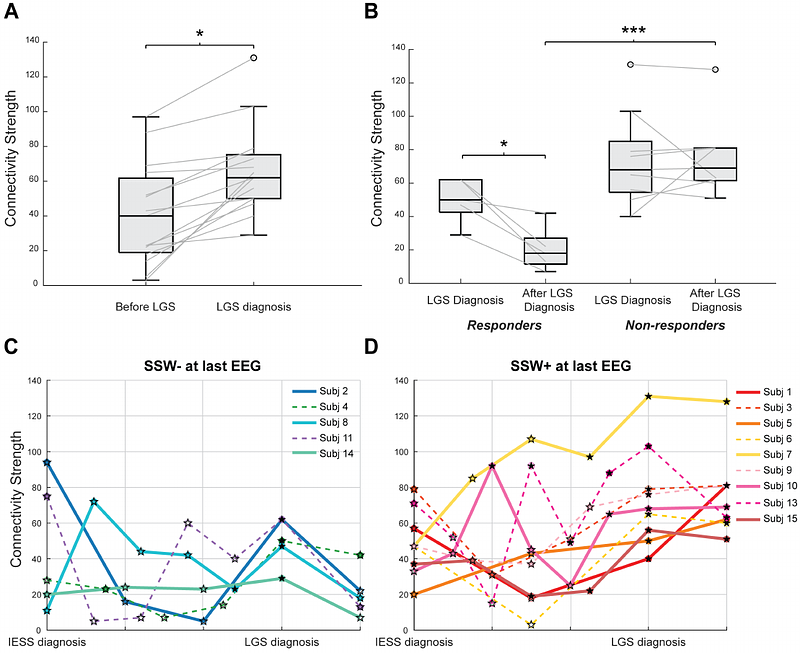EEG Functional Connectivity as a Marker of Evolution from Infantile Epileptic Spasms Syndrome to Lennox-Gastaut Syndrome

EEG Functional Connectivity as a Marker of Evolution from Infantile Epileptic Spasms Syndrome to Lennox-Gastaut Syndrome
Mila, B. R.; Liu, V. B.; Smith, R. J.; Hu, D. K.; Benneian, N. A.; Hussain, S. A.; Steenari, M.; Phillips, D.; Adams, D.; Skora, C.; Lopour, B. A.; Shrey, D. W.
AbstractTimely diagnosis and effective treatment of Lennox-Gastaut Syndrome (LGS) improve prognosis and lower healthcare costs, but the transition from infantile epileptic spasms syndrome (IESS) to LGS is highly variable and insidious. Objective biomarkers are needed to monitor this progression and guide clinical decision making. We retrospectively collected longitudinal EEG data at the Children\'s Hospital of Orange County from fifteen children who were diagnosed with IESS and later with LGS between 2012 and 2021. EEGs were from IESS and LGS diagnoses, between the two diagnoses, and following LGS diagnosis. Functional connectivity networks were calculated using a cross-correlation-based method and assessed relative to diagnostic timepoint, treatment response, presence of clinical markers of disease, age, and amplitude of interictal spikes. Connectivity strength was high at LGS diagnosis and decreased after favorable response to treatment, but it remained stable or increased when response was unfavorable. In all subjects, connectivity strength was higher at the time of LGS diagnosis than at the preceding timepoint. Presence of clinical markers of LGS were associated with high connectivity strength, but no single marker predicted connectivity strength. Computational EEG analysis can be used to map the evolution from IESS to LGS. Changes in connectivity may enable prediction of impending LGS and treatment response monitoring, thus facilitating earlier LGS treatment and guiding medical management.